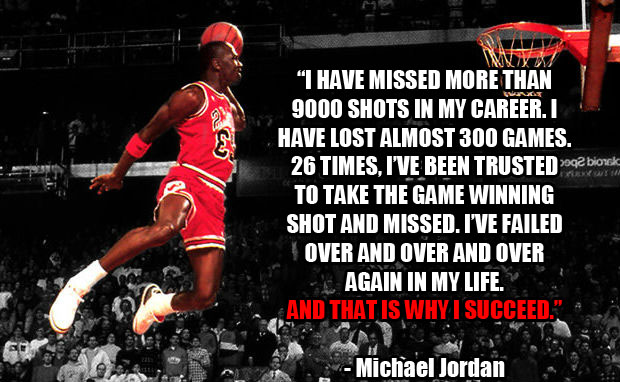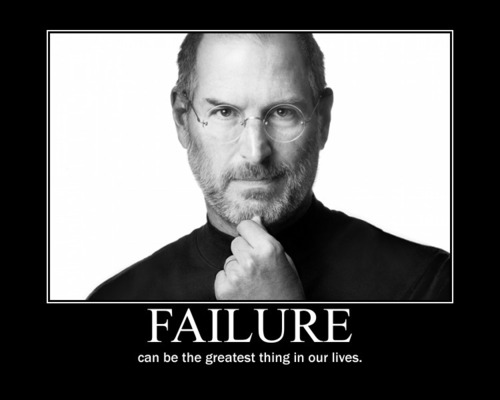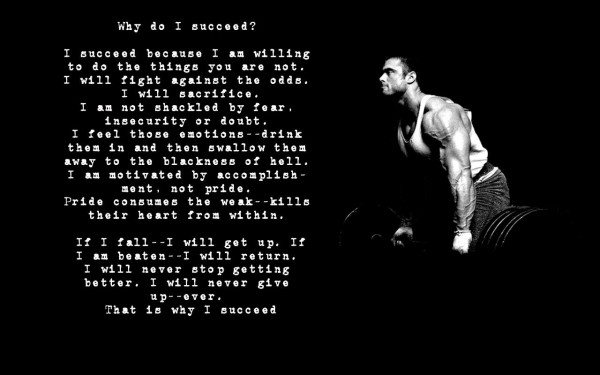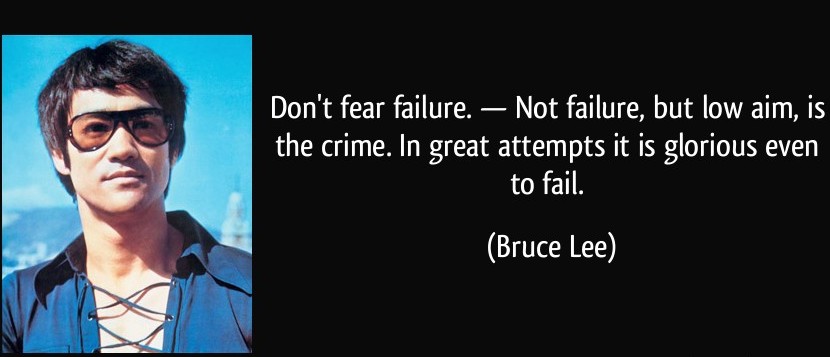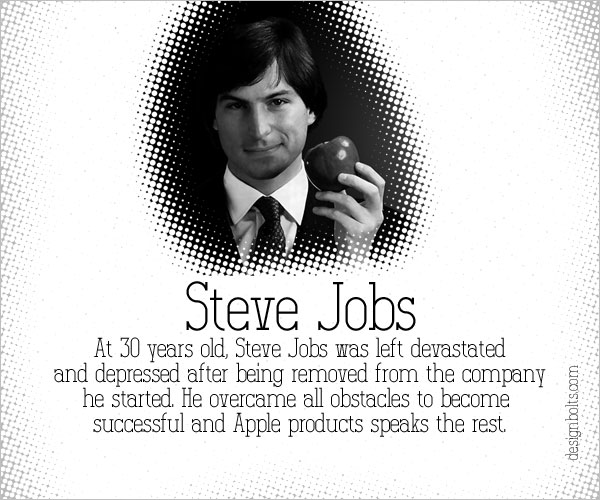Zimbabwe – Observations on the Mid-Term Fiscal Policy review
/0 Comments/in Africa/by Colin DurrantZimbabwe – Observations on the Mid-Term Fiscal Policy review

The Minister of Finance and Economic Development presented the 2014 Mid-Term Fiscal Policy Review Statement in Parliament on Thursday, September 11. The Review considers the performance of the economy during the six months to June as well as the outlook to year-end. For a copy of the full statement, please call up the Ministry’s website, www.zimtreasury.gov.zw from which you can download the entire presentation. At 140 pages, it is even heavier reading than the summary below.
In the first sections the Minister offers details of the assistance offered to Zimbabwe by various countries and development agencies, together with up-dates on contracts for work on power stations, dams and roads.
In the Minister’s assessments of achievements in the first half of the year, he makes frequent references to the evidence of mounting stress in the economy, some of the consequences of which were disappointing revenue collection figures and increased levels of expenditure.
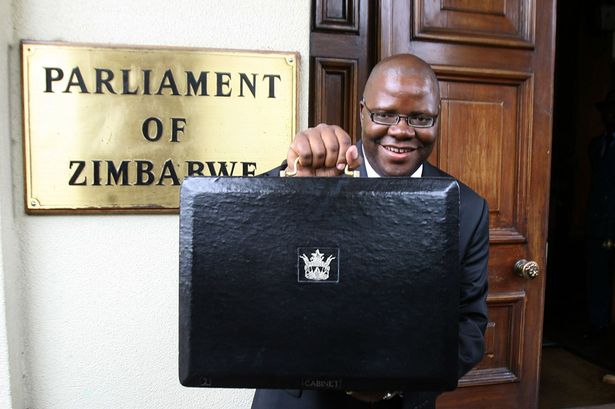
Zimbabwean Finance Minister
He also reviews production, trade and the budget figures for the first half of the year, all of which lay the foundation for his observations on the macro economic framework. From these, the Minister derives indicators upon which he then tries to build performance forecasts for the rest of the year.
Of concern from this point – which is reached on Page 80 – is that claims of economic growth appear to be out of line with the evidence that emerges from his preliminary observations. In summary, mining output values are down, imports are down, exports are down, corporate tax revenues are down, VAT revenue is down, which means that retail spending is down, the public debt is increasing and to provide for higher government recurrent expenditure, cuts were made to planned capital spending.
Despite these harsh trends, the Minister expects Gross Domestic Product to increase from $13,49 billion in 2013 to $14,01 billion this year. The forecast appears to be based on the improved tobacco and maize output, but the value of those improvements do not compensate for the shrinkages seen in commerce and mining, together with the undisclosed falls in manufacturing and formal employment, all of which were reflected in falling tax revenues.
With rising budget commitments – additional spending requirements of $951 300 000 are identified – the Minister announces Revenue Enhancing Measures. These are dependent on expected revenue flows from taxes on fringe benefits, higher rents from government housing, a new tax on mobile phone use and higher excise duties on fuel, as well as higher import duties and surtaxes on meat, dairy products, vegetables, prepared foods, beverages, cosmetics, cleaning materials, furniture and motor vehicles.
No information is offered on the amounts that the Minister expects to raise from these different sources, but as the full amount will impact directly on the disposable incomes of consumers, their total purchases of household requirements will be reduced by about the same total. Accordingly, the increases in tax revenues achieved from the targeted areas will be closely matched by falls in tax revenues from other sources, these being mainly VAT, company profits taxes and import duties. If these falls are significant, further job losses and reduced PAYE contributions will also undermine tax receipts.
These possible cuts appear not to be worthy of the Minister’s attention because he argues that the higher import duties will persuade consumers to more actively support local producers of the affected products. By enhancing industry capacity utilisation, says the Minister, government will be able to resolve some of the challenges relating to the competitiveness of local products and the unsustainable current account deficit. He also claims that the measures to get industry working will resolve the liquidity crunch, the growing unemployment and, using the phrase “as well as fiscal space”, improve tax revenue flows as well.
Unfortunately, actually resolving such challenges would depend upon restoring capacity. But it no longer exists. With the disappearance of efficient farmers, it is the falling production volumes that were soon causing the evaporation of investor confidence upon which each of the value-adding manufacturing business depended. The final nails in their coffins were driven home by price controls, but it was Land Reform that did the initial damage.
Food product imports are a specific target for the Minister, but for the food processing companies who are supposed to be put back on their feet by higher import duties, the capacity they once had depended upon substantial investments that were once fully justified by the steady, dependable supplies of the needed inputs from dependable, well-capitalised farmers. It is these farmers who are now missing from the picture. That is where the start should have been made, but government remains determined to prevent the restoration of large-scale commercial farming.
Taken together with the destruction of corporate savings, the indigenisation demands and the dissipation of industrial skills, these are the factors that have to be included in the sequence of events that brought about the deindustrialisation suffered by Zimbabwe. This whole sequence has yet to be unravelled, but further distortions have since been imposed. While price controls have not been a handicap since dollarization, Zimbabwe has instead become burdened by self-inflicted cost factors that are serious enough to prevent local factories from becoming competitive.
Among these are wage levels that cannot be supported, given the inefficient production methods in use, and further inefficiencies are caused by erratic electricity and water supplies. Excessive trades union influence, supported by Ministry of Labour regulations, has led to job protection measures that prevent the rationalisation that might have given business owners reasonable prospects of becoming successful. While those in place are struggling to survive, the continued existence of regulations hostile to employers will hold down the country’s prospects of attracting new investors.
Revisions to retrenchment laws are needed as much in the public sector as in the private sector. Zimbabwe’s public sector employment costs are the highest in Africa and the Minister announces in his statement that another $209 million will be needed by year-end. This will take government’s employment costs to $3,2 billion, which will be 77% of total expenditure, or 83,1% of expected revenue. Government’s inability to retrench thousands of superfluous public sector employees has placed these individuals in a privileged position that even if the country’s economy were enjoying strong growth, would be beyond its means. This job protection is not deserved.
The needed growth will not materialise until investors, local as well as foreign, begin to find the investment environment acceptable. In this regard, the Minister claims that the country’s Indigenisation laws have been misinterpreted and misrepresented.
He then makes the claim that compliance with the indigenisation policy framework can be achieved by obtaining a listing on the Zimbabwe Stock Exchange. This is interesting news, specially for all the companies that were already listed on ZSE when the Indigenisation and Empowerment Act was passed. Their directors have since faced repeated and often threatening reminders of the penalties they will face if a majority of the shares in issue are not transferred to indigenous individuals, or to government entities such as the Zimbabwe Mining Development Corporation.
Investors are invited to await the publication of a Government Gazette Notice that will clarify the regulations to the Indigenisation and Empowerment Act. These are expected to revise the terms for Joint Ventures, and for investments that will empower local communities, serve needy sectors of the economy, take the form of contract farming or land use agreements, or involve the investors in Build-Own-Operate-Transfer projects.
Despite the Minister’s claim that the earlier Statutory Instruments on indigenisation have been simply misunderstood, these reinterpretations amount to significant changes that will bring with them the need to amend the original Act. Before they can take these claims seriously, investors will be keen to see revisions in the regulations reflected in amendments to this Act.
———————–
In his Fiscal Policy Statement, the Minister certainly recognises many of the economy’s shortcomings and he makes a point of the need to improve upon the efficiency and accountability of the various arms of government, the parastatals and local government.
However, the Minister’s policy measures are almost entirely directed at raising more revenue from whatever is left of the country’s productive capacity. The few exceptions that will be of benefit to producers include a reduced royalty level for gold mines, but the deeper issues adversely affecting business and investment levels either receive no attention, or have attracted cursory glances that will make no difference to economic performance.
More direct Ministry of Finance intervention would be helpful in ensuring that the official charges, levies, fees and taxes, which presently add to the costs of doing business in Zimbabwe, should not be allowed to remain the reason why locally produced goods cannot compete with imports. Directly under the Minister’s control are the recently introduced border charges, surtaxes and fines. When taken together with inordinate delays at customs posts, these have contributed to the production costs that have made many companies uncompetitive.
Also within the Minister’s sphere of influence is the fact that a US dollar does not go as far in Zimbabwe as it does in other countries. Blatant price distortions have emerged and the Minister should use his authority to prevent the imposition of exaggerated US dollar prices, costs and wages, as these are also partly responsible for making Zimbabwean producers uncompetitive.
Public sector salaries in Zimbabwe, relative to GDP, are the highest in Africa partly because the value of a US dollar is assessed at too low a figure. This thinking has been carried through into an official price for maize of $390 a tonne, which is almost twice the current world price. The Minister of Finance should have over-ruled the Ministry of Agriculture’s attempt to devalue the currency on which Zimbabwe has become dependent. If this price is allowed to stand, there will be nothing to stop, say, the Minister of Mines declaring that gold will now sell for, say, $3000 an ounce.
In the business sector, distortions on the same scale have forced US dollar wages to be twice as high as their equivalents in the Far East. The Ministry of Labour, in support of the activities of trades unions, has sustained these distortions in the valuation of the US dollar. The resulting pay scales have reduced the viability of companies that would have paid higher taxes if they had not been rendered unprofitable. Many have been forced to close, so the jobs and PAYE contributions have been destroyed as well.
Tax revenues are generated when economic activity, which requires investment, brings about value additions and profits. As the old investments struggle to remain competitive and the US dollar’s real value is high enough to permit access to imports at prices that are lower than their local equivalents, the Minister’s taxable territory is shrinking. For the affected goods, the country receives only the VAT. The rest of the taxes are paid somewhere else.
Zimbabwe has seen its formal employee levels fall to the figure that was recorded in 1970. In 44 years, the population has more than doubled, so today our formal sector employees should total about two million, not the 850 000 who presently have a job. If two million employees were holding down formal sector jobs in Zimbabwe, they would have become a far bigger source of tax revenue than three times that number now struggling in the informal sector and being targeted for new taxes and fees.
In 1980, one person in every ten formal sector workers had a job in government. Today, one person in every three formal sector workers has a government job. These figures exclude parastatal workers. To get back to an affordable public sector, the taxable private sector needs to be built up to at least three times its current size.
That requires investors, and investors need an investor-friendly environment. Right now, Zimbabwe’s business environment ranks as one of the unfriendliest in the world. The Minister of Finance does express a wish to address some of the shortcomings through legal, regulatory or administrative reforms, and he also recognizes the need to re-establish good working relationships with the international financial institutions, from whom long-term loans are essential.
The Minister does report on the efforts made to meet payments obligations to the IMF, the World Bank, the African Development Bank and the European Investment Bank, to which it will make “token” payments to “demonstrate Zimbabwe’s commitment towards resolution of its external debt challenges”. According to the Minister, the payments are considered important; they will assist Zimbabwe to negotiate for debt relief.
Houseboat incident involving lions
/0 Comments/in Africa/by Colin DurrantHouseboat incident involving lions
Rae Kokes, the principal researcher for LionAlert who was on the scene during the recent incident involving lions attacking a houseboat deckhand after he disembarked to secure the mooring lines on a houseboat. As usual, rumours tend to get out of hand so below is the official story from Rae.

September 7 2014
On the 4th of September ALERT’s Principle Researcher for the Matusadona Lion Project was tracking lionesses from the Eastern Pride in the Mucheni area. A visual was obtained at 5pm and they were followed as they headed South West to the other side of the peninsula they were on.
After losing visual the researcher anticipated their movements and waited at a look out point some distance way. At this time a houseboat was arriving into the nearby bay.
At 6:30pm shouting was heard from the houseboat and our researcher arrived at the scene within 10 mins to find an employee had been attacked by the lions.
Using the research vehicle the lions were driven off the victim but first aid unfortunately could not be given as the lions remained within too close proximity. The man sadly passed away at the scene.
Zimbabwe Parks & Wildlife Management Authority scouts arrived shortly after, and with their help, as well as that of a paramedic on the houseboat, the victim’s body was safely retrieved.
Two lionesses, known within the Matusadona Lion Project study as F106, “Gogo”, and F114, “Ngoda”, were destroyed by Park’s staff following this incident.
There was no evidence to suggest either of these lions was injured or ill that would cause them to attack a person. It is believed because the victim was moving alone at night in the bushes he approached the lions unknowingly.
This has been a huge blow for the Park, the lion population and the study, however the real tragedy is in the loss of the victim. Our deepest sympathies and thoughts are with his family left behind.
A sincere thank you is to be made to National Parks staff and the Zimbabwean Police for their professionalism and assistance. A thank you also to Mike Blignaut and Pierre Hundermark from Bulembi Safaris for their assistance.
The link to the article on the LionAlert website is http://www.lionalert.org/article/Matusadona_Lion_Project_Update
Dealing with failure
/1 Comment/in Interesting/by Colin DurrantDealing with failure

Failure
I guess failure is largely down to perception unless you want to be brutally honest and black and white. You could look at it a lot of different ways and try to take the positives out of your journey that ultimately lead to failure to achieve what you set out to.
I am always fascinated by Mixed martial arts fighters in the UFC. I’m a big fan as they have to train so incredibly hard and have a lot of courage. Can you imagine getting I to a cage with another guy who is at the top of his game both physically and skills wise and really wants to punch you on the nose. That’s gonna hurt! So the fighters put a lot of effort in making sure they do not get smacked on the snout.
Apart from the effort and courage, only one out of the two guys or girls is going to win. Both have probably trained equally as hard as each other but only one will win. There is success or fail. No half way.
Maybe it will be a close fight or maybe one will get steam rolled but even then the one getting steam rolled could still pull a win off like Anderson Silver verses Chael Sonnen. Anderson got beaten up for 4 and a half rounds and then got Chael in a choke hold with his legs and won the fight. But, it means Chael lost, he didn’t become world champion, he didn’t beat Anderson Silver.
My question is how do we look at these things. Do we say well done you did well or do we say you lost. End of. You failed. The human ego is a fragile thing. You have to be strong to deal with failure, get out of bed and go for it again to try and succeed. No one became world champion at anything and never tasted defeat.. Ever..
I have failed at a few things recently. My biggest failure to date is not being with my son every day. I tried everything I could to be with his mother so that I could be with my little boy but it simply didn’t work out. Above all else I felt he deserved to grow up with his mum and dad. I really tried hard and sacrificed a lot to make that happen but eventually it was taken out my hands. And I had to deal with the ultimate failure. I had failed to be there for him every day.
We are so close and have such an amazing relationship that I cherish and am grateful for. I didn’t want to lose that. I still see him a few times a week and we still have a great relationship but I don’t have him with me every day. So I failed.
My second failure was an extreme Ironman I was training for. My friend Darren and I had done the race the year before on only 3 months training. It wasn’t enough for a 2.4mile swim in the North Sea, a 112 mile bike ride which included 4500 metres of climbing and a marathon which included running up and down Ben Nevis in Scotland.
We both finished. It was pretty tough to say the least but we finished. This time we both had the worst pre week possible. I was sick (probably from stress) so wasn’t feeling my best and worst of all I didn’t feel like eating which is rather important when you’re about to burn off 10 000 calories. Darren also had a dodgy tummy.
The day before a little wheel broke on my derailler so that needed running about and fixing. Lucky there was a bike mechanic at the race start so it was all fixed but there were a few other niggles to sort.
Now I don’t eat a lot of carbs anymore as this helps me have a six pack. Mostly meat and vegetables. So when we had a large carb dinner the night before, it transpired it wasn’t the best for me.
After a nice 3.30am wake up call we headed off to a chilly (12 degrees) 2.4 mile swim in the North Sea. The swim went well for both of us despite going a little off course.
The bike started fine but then everything seized up in my back. I was in a huge amount of pain. While I can deal with a lot of pain, I actually started loosing power too. After 40 miles I was stuffed. I had another 20 miles to get to the second check point (we skipped the first) which was seriously hard work and very mentally challenging.
Reaching the check point where my girlfriend and other friends where patiently waiting I told then I was done. I was a wreck. They didn’t get it though, they said I would be fine but I was trying to tell them I really wasn’t.. Not even a little.
Luckily Darren’s wife, Fran is also a skilled therapist so lay me on the grass and gave me a back treatment. This eased it and I felt loads better. I wasn’t really up for eating much. I had eaten more than usual but not enough much to the frustration of my crew who where trying to bribe me to eat by offering sexual favours… I was tempted!
I headed off on the next 20 mile stint feeling better but not 100%. I got through it to the 80 mile check point and got another treatment from fan. More desperation to get food into me and off on the final hilly 30 miles. I actually started feeling loads better which is interesting.
Having lost all sense of competitiveness I decided to wait for my compatriots, Darren and Steve who I thought were not far behind. Transpired they were further back than I thought but still it was good we all headed off on the marathon together at a brisk walk.
After a few miles my body began to break down despite having had a massage while I waited. My body literally couldn’t walk uphill. It almost came to a grinding halt. I started to jog the downhills to make the time back. I found a slow jog was easier than walking. Steve ran off to try and make the next check point before the cut off time while Darren and I soldiered on.
There were a few people and a car at the bottom of a very steep off road accent. About 2 km uphill at about 30 to 45% incline so no walk in the park. Darren said it was last chance saloon to turn back. I simply didn’t have that button to stop.
I had sent a text to the girlfriend saying I was concerned I really wasn’t going to make it. All I got back was “you’re fine”. Awesome!
So I headed up the steep incline and miraculously I found another gear and Darren struggled to keep up. I had done a lot of steep uphill training and obviously my body remembered this and I was using a different set of muscles. We actually caught Steve back up.
It is an extremely tough climb and the ground is rough and soggy to boot. However we got to the top and headed down the other side. A rough goat track with rocks and water. I didn’t make good time and probably should have tried to run. We did a river crossing at the bottom and headed up and onto a dirt road towards the 18 mile check point.
It became apparent we were not going to make the time limit at 18 miles in order to head up Ben Nevis. Steve was ahead of us and we were hoping he was going to be in time. It turned out later he hurt his knee to although he made the check point, he couldn’t go any further.
I was enjoying the environment as we caught up another guy soldiering on by himself. He was actually a local but still found it extremely hard going. The midges made an appearance which were slightly annoying / driving us slowly insane.
We reach a vehicle and some race organisers at about 12 miles who insisted it was time to call it a day. I would have been happy to keep going to 18 miles but the midges were getting frustrating and we didn’t really have a choice.
So.. We didn’t finish. We failed.
Do we focus on our failure or on our enjoyment of the journey? Do we take the positives out the situation and be realistic compared to the time available to train verses what we really needed to have done to complete the event? Or do we acknowledge we were simply too weak to focus and commit to our training which led to our failure and next time we need to try significantly harder and be significantly more focused and determined to put the work in?
It is a interesting set of questions. It is always important to be positive and not beat yourself down with negativity however you need to accept failure and come back stronger next time. Failure is part of life and it is how you deal with it and bounce back that defines you as a person. Defines your character and strength.
Be positive but don’t kid yourself. You did fail and you have to work harder to not fail the next time. At least we never broke the rule of never, never, never give up. However close it was.
I always used to say that failure is not an option. Until I heard someone (Chael Sonnen) say that failure is always an option. The option is always there for you to take. Just choose not to fail.
Phishing or email account hack leads to Nude Celebrity pictures
/0 Comments/in News/by Colin Durrant
Nude photos of Jennifer Lawrence (seen here at the Oscars) have been leaked online. But how did the hacker get access? Photograph: Angela Weiss/FilmMagic
The leak of Nude Celebrity pictures and, allegedly, videos of Jennifer Lawrence by an unknown hacker has security experts – including Apple – interested and puzzled. Although the hacker has posted a list of scores of female celebrities to a chatroom claiming to have more pictures of them, a number of the Celebrity’s have claimed that the photos of them are faked, while others claim they were deleted.
The list of those allegedly affected is long, and includes Jennifer Lawrence, Jenny McCarthy, Rihanna, Kate Upton and the American actress Mary E Winstead. With any hack, the principal questions are: what was the avenue of attack? And where were the photos and videos – if they were real – downloaded from?
It is unlikely according to Apple that their email system has been hacked. Large companies like Apple and Microsoft have dedicated in-house security teams who attempt to break into their own systems regularly.
Rik Ferguson, vice-president of security research at Trend Micro, said; “A wide scale ‘hack’ of Apple’s iCloud is unlikely. Even the original poster is not claiming that,”
As with the many celebrity hacks (and daily hacks that affect less famous people), the simpler and more likely explanation is the leak of an email and password combination, either through guesswork or “phishing”, when users are fooled by authentic-looking sites into entering their login details, which are then used against them.
Apple have said they are still investigating what is claimed to be an attack on its iCloud service but it is unlikely that their whole system has been compromised. The iCloud service is used by millions of iPhone users to store settings and back up all photos (and other data) taken with the phone to Apple’s “cloud” based servers.
Once you have an iCloud user’s email address and password, you can log in to their account and download those photos (including old / deleted ones) and other info.
An extra layer of security that will send a code to the owner’s phone before it allows login would be an example of two factor authentication (2FA) which will greatly increase the security of their iCloud account. Paypal as an example have this exact security measure in place. However’ comparatively few people use 2FA either because they don’t know it is available or it is too much trouble.
Apple has no comment currently on the incident but is still investigating whether the data was all taken from its iCloud service and, if so, to what extent users’ accounts were compromised.
Ferguson suggests that the hacker may have used the “forgot password” link on Apple’s iCloud system after managing to get hold of the various celebrities’ email addresses either directly or by hacking someone else’s device or email system. If anyone used the same password on multiple services, then once the hacking discovered the password on a different site then they could try the same password on the iCloud website.
Lawrence’s publicist did admit the photos are real but did not say how old they are. In a tweet, Winstead suggested a long standing effort by the hacker. “Knowing those photos were deleted long ago, I can only imagine the creepy effort that went into this,” she wrote.
However security experts have pointed out that while a smartphone user thinks they have deleted the photos from their phone – they are still possible to recover from the phone’s memory. Someone may have got hold of her old phone and managed to retrieve the photos. That said, it is unlikely they happened upon a bunch of old Celebrity’s phones.
Modern smartphones routinely save photos to the cloud because they often lack enough capacity for the huge number of photos that people take. Apple’s iPhone by default saves photos to iCloud; Google’s Android to its Google+ service and Microsoft’s Windows Phone to its OneDrive service.
Third-party services such as Dropbox also offer automated photo and data backups. “People take photos and zap them, but don’t realise that they are being uploaded and saved forever,” Cluley told the Guardian. Ferguson agrees: “Deleted doesn’t always mean deleted,” he notes.
The hacker posted a screenshot claiming to be of so-far unreleased videos and images taken on a Windows PC after he had no doubt downloaded them from one of the cloud based services above.
“Two-factor authentication” protects against such hacks because it requires anyone setting up a copy of an existing account on a new device to enter a code that is sent to the primary device – usually a phone. Without that, access is blocked. Apple, Google, Microsoft and Yahoo all offer two-factor authentication on accounts but as mentioned above, this service is not always taken advantage of for different reasons.
Other Celebrity’s have claimed that their naked pictures are infact fake. A representative for Ariana Grande said the photos said to be of her are “completely fake”. Victoria Justice also tweeted that the “so called nudes of me are FAKE people. Let me nip this in the bud right now *pun intended*”
With so many people dealing with Celebrity’s it is possible that someone got hold of their user details, perhaps to manage their social media campaign and then tried these details on other sites. However, it does appear that this has been done by a professional hacking covering their tracks rather than a simple opportunist.
Another possibility is an IT expert who helped the Celebrity setup a new computer system and then given themselves remote access to this system to grab and steal their data.
This has happened in the case of the “Hollywood hacker” Christopher Chaney, who spread photos from Scarlettt Johansson and Mila Kunis’s email accounts back in 2011, and was sentenced to 10 years in jail in December 2012 and ordered to pay more than $66,000 in restitution.
Chaney was accused of illegally accessing the email accounts of more than 50 people in the entertainment industry between November 2010 and October 2011; in one instance he sent an email from the account of Aguilera’s stylist to the star, asking for scantily clad photos, and then posted them online.
Chaney did eventually apologise, saying that his actions were “probably one of the worst invasions of privacy someone could experience”. It was also claimed he had stalked two people online for more than ten years. A tad creepy.
In the Chaney case, the celebrity’s had their email accounts hacked, and all their emails were being forward despite the password being changed.
So the moral or the story is, if you are a celebrity or not, use two factor authentication where possible. If you need any help or advise, feel free to get in touch.
Categories
- Africa (53)
- Channeling (104)
- Cybersecurity (3)
- Diet Tip and Tricks (3)
- Human Race (4)
- Interesting (12)
- News (11)
- Short Stories (1)
- Tour De France (2)
- Triathlon (2)
- Uncategorized (9)
Social
Follow me on Twitter
My TweetsLife has no limitations apart from those you put on it yourself
Lew Brown




